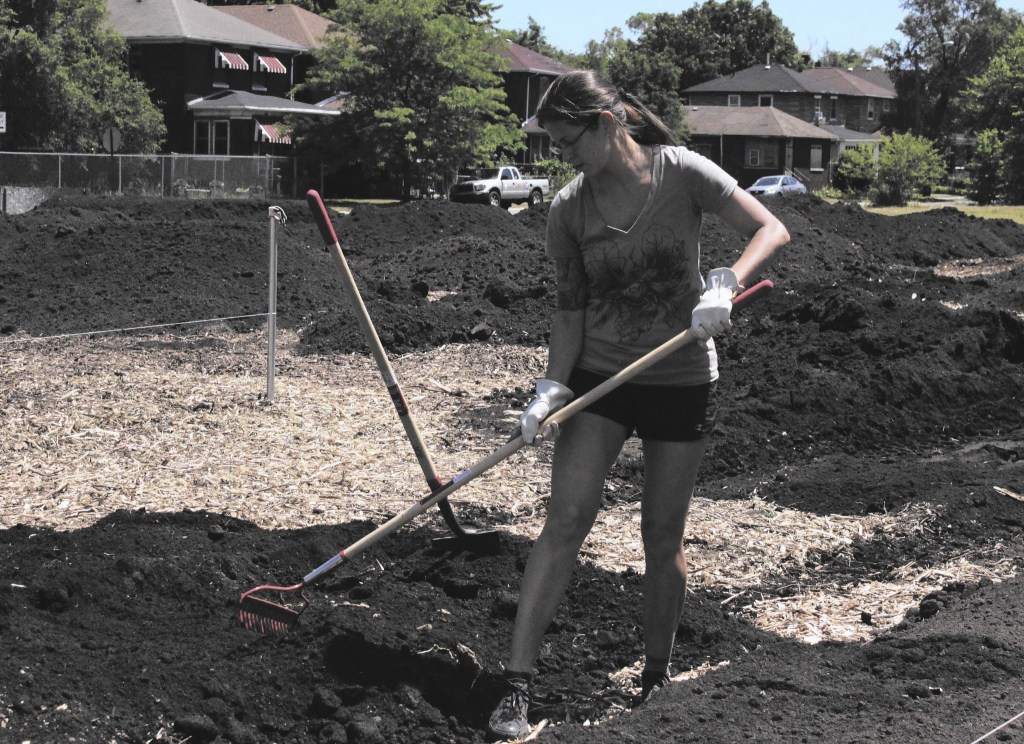More than 30 of Northwest Indiana’s local government leaders learned about healthy local food and railroads Thursday, as Northwestern Indiana Regional Planning Commission members heard from leaders of the Northwest Indiana Food Council and a Norfolk Southern representative.
Incorporated in 2018, six years after a NIRPC-funded study, the Northwest Indiana Food Council aims to end food insecurity and improve the viability of local farms.
“We believe everyone has a right to food,” said Anne Massie, the food group’s co-executive director.
Virginia Pleasant, the other co-executive director, said that while Indiana is a top-10 state in agricultural production, 98% of the fruits and vegetables its people eat come from somewhere else.
The food council has been encouraging local growers and meeting with organizers of local farmers’ markets.
It also has been working to get more locally-grown food into schools and now is supplying more than 75 Northwest Indiana schools, Massie said.
Farmers have increased their production to supply the schools, she said.
And, Pleasant added, “We’re learning from food service directors that kids are really excited to come and eat” locally grown food.
NIRPC member Andy Vasquez, from the Porter County Council, participated in the 2012 study that helped set up the food council and said feeding the region’s residents isn’t a new issue for him.
“It’s always been my concern, because I’ve gone hungry in my life,” he said. “Our citizens should not go hungry.”
A former East Chicago and Gary resident, he has proposed turning vacant industrial buildings in the region into vegetable- and fruit-growing sites.
“With the amount of resources we have, why doesn’t it get done?” he asked.
The railroad discussion came about because Northwest Indiana cities and towns have had contentious relations with railroads for years.
“How can we improve working together?” NIRPC Chair Tom Dermody, the LaPorte mayor, asked W.R. “Will” Miller, director of public engagement for Norfolk Southern.
“We are here to work with you,” Miller said to the NIRPC audience. “That’s the message I came here to deliver.”
He was accompanied by Derek Sublette, Norfolk Southern’s assistant vice president for government relations.
Dermody asked why trains sometimes stop and block one or more crossings for hours.
“We don’t make money by standing still,” Miller said. “We want to keep moving.”
A train might stop because of a signal, a train coming in the other direction on a single track, another company’s train crossing, a crew having to leave because its work time has ended, or an incident somewhere else.
“An incident in South Bend can cause problems in Chicago,” Miller said.
East Chicago City Council member Vanessa Hernandez-Orange said stopped trains sometimes block streets in her city for 20 or 30 minutes. Even when the city calls someone from the railroad, she said, nothing changes.
“If it’s a consistent issue,” Miller said, “you need to talk to someone like me.”
Think of a railroad crossing as an intersection where the train always has the right of way, Miller said.
And the Norfolk Southern’s 24,000 crossings are intersections “we’d rather, frankly, not have,” he added.
He said the railroad favors the state’s Local Trax program to build bridges over busy railroad tracks.
 Valparaiso Mayor Jon Costas delivers his inaugural address during a ceremony on Monday, Jan. 1, 2024, at City Hall. (Michael Gard/Post-Tribune)
Valparaiso Mayor Jon Costas delivers his inaugural address during a ceremony on Monday, Jan. 1, 2024, at City Hall. (Michael Gard/Post-Tribune)
Porter County Surveyor Kevin Breitzke thanked Norfolk Southern for agreeing to let the Kankakee River Basin and Yellow River Basin Development Commission remove the supports for an abandoned railroad bridge over the Kankakee River. The river commission had said the bridge has been trapping trees and other debris floating by, creating logjams.
Valparaiso Mayor Jon Costas asked if a quiet zone, where a train is not allowed to sound its horn at crossings that have additional protections, is “really a trend.”
Setting up a quiet zone “can get pricey,” Miller said, because the city or town has to pay for additional measures to keep vehicles from going around crossing gates. Some communities have backed away from getting quiet zones because of the cost.
Tim Zorn is a freelance reporter for the Post-Tribune.

